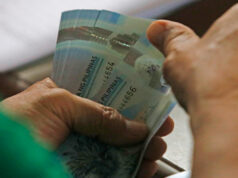Cebu Pacific to take delivery of its 1st A320neo aircraft by November
BUDGET carrier Cebu Pacific expects the delivery of its first Airbus A320neo (new engine option) by November, which will be deployed for international routes before the end of 2018.
“I think the upcoming neo deliveries is going to be exciting for us. We expect our first neo to be delivered around November. Entry into service sana [hopefully] by December. We hope to use it on international routes,” Cebu Pacific Vice President for Commercial Planning Alexander G. Lao told reporters last week.
Although the Gokongwei-led airline has yet to finalize which routes the A320neo will be used, Mr. Lao said they are looking at a combination of flights to Indonesia and Japan.
Cebu Pacific currently has an order of 32 Airbus A321neo, five A320neo, two A321ceo (current engine option) and six ATR 72-600 aircraft.
Mr. Lao said the plane acquisitions are expected to fuel the budget carrier’s growth, as Cebu Pacific has not expanded its fleet as much in the last few years.
By next year, Mr. Lao said the budget carrier is seen to receive an aircraft almost every month. All the company’s orders are targeted to be delivered between this year and 2022.
These new aircraft will likely be deployed to different airports, Mr. Lao said, such as Ninoy Aquino International Airport (NAIA), Mactan-Cebu International Airport (MCIA) and Clark International Airport.
“I think there’s plenty of places to deploy. It’s a matter of us trying to stimulate the market also and see if we can get enough traffic. (There are) enough places to put them,” he said.
Mr. Lao also noted the company may partially phase out some of its older Airbus A320 units once its new orders arrive.
Cebu Pacific currently has a fleet of 67 planes, of which 36 are Airbus A320s, five A321ceos, eight A330s, eight ATR 72-500s and 10 ATR 72-600s.
Cebu Air, Inc., the listed operator of Cebu Pacific, took a hit from rising jet fuel prices and the weakening of the Philippine peso as reflected in its first half net income, which fell 24% from last year at P3.309 billion.
Last month, the airline started raising fares for international and domestic flights with the implementation of a Level 3 fuel surcharge. With the surcharge, it hopes to recover some of the losses incurred from rising fuel expenses. — Denise A. Valdez



